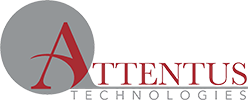Here at Attentus Technologies, we pride ourselves on being able to turn our clients’ ticket volumes down to 1 ticket per every 4 computers per month. However, it takes dedication. There’s a specific set of IT help desk best practices that we follow to make that happen.
| “If the help desk staff you’re working with don’t seem to make an effort to minimize your reliance on them, you have to start wondering what’s in it for them. If they want you to call more, they might profit off your frustration. You don’t want that.”– Charles Bender, CEO, Attentus Technologies |
Of course, we want our clients to save as much time as possible on service desk management when they outsource us. Still, we’re also serious about education, and want to show our clients how they can make everything run a little more smoothly.
That’s why we’re sharing some of our top IT help desk best practices here today. These practices are what we use to turn down ticket volumes and make support calls run shorter. Following these best practices and working with our support team is a winning combination.
Top IT Help Desk Practices to Keep Support Calls Short
Prioritize User Education
Start by creating comprehensive user guides and FAQs for your clients. These resources should cover common issues and how to resolve them. This approach empowers users to solve simple problems on their own, reducing the number of tickets your help desk receives. Additionally, 67% of people surveyed say they prefer this system over speaking to a live representative.
Implement a Tiered Support System
Organize your support team members into tiers, where Tier 1 handles basic inquiries and Tier 2 takes on more complex issues. This structure ensures that calls and tickets get directed to the right person with the right level of expertise, which makes resolutions happen faster.
Optimize Issue Escalation Processes
Define clear guidelines for when and how issues should be escalated. This ensures that complex problems are quickly passed on to the appropriate expertise level within your team. By having a well-defined escalation process, you minimize the time spent on back-and-forth communication.
Encourage Self-Service Options
Offer self-service portals that allow users to report issues, track ticket progress, and access helpful resources. This empowers customers to seek answers to their questions without immediate direct support. A well-designed self-service portal reduces the volume of incoming tickets and shortens calls by providing users what they need to solve problems independently.
Foster Clear Communication Channels
Establish clear and accessible communication channels for your clients. Whether through email, chat, or phone, ensure clients know how to reach your support team easily. Clear communication reduces misunderstandings and ensures issues are resolved quickly. This leads to fewer follow-up tickets and shorter resolution times.
Discover More Service Desk Best Practices That Will Make Your Day Easier |
Introduce Proactive Monitoring
Implement systems that monitor your clients’ IT environments for potential issues before they become problems. This proactive approach can identify anomalies that could lead to future tickets. By addressing these issues early, you prevent them from escalating into larger problems that require support intervention.
Regularly Review & Update Knowledge Bases
Keep your knowledge bases up-to-date with the latest information, solutions, and troubleshooting steps. Regular reviews ensure that all resources are current and effective. Updating your knowledge bases ensures that outdated information isn’t used for customer support. It also ensures technicians find relevant and accurate solutions quickly.
Leverage Customer Feedback Loops
Actively seek and utilize customer feedback to identify common pain points and areas for improvement. Use surveys, feedback forms, and direct communication to gather insights. This proactive approach allows you to address issues with your service before they become widespread. Such a system reduces ticket volumes and improves the customer experience.
This best practice comes with an additional benefit. Companies who prioritize customer experience in support generate 4-8% more revenue.
Invest in Quality Assurance
Implement a quality assurance program to monitor and evaluate the effectiveness of your help desk team. Regularly reviewing support calls and tickets helps identify trends, areas for improvement, and training opportunities. Quality assurance ensures that your team continuously improves and meets high standards.
Save on IT Costs While Maintaining IT QualityWe have a guide to show you how. |
Download Yours Free |
Utilize Ticket System Automation
Use help desk software to categorize, prioritize, and assign tickets as they come in. This method streamlines the process, ensuring that service requests go to the right person without delay. Automating routine organization tasks also gives your humans more time to resolve issues.
Enhance Remote Troubleshooting Capabilities
Equip your help desk team with advanced remote troubleshooting tools. These tools allow them to diagnose and resolve issues without the need for lengthy explanations over the phone. By seeing and controlling the client’s system remotely, your team can quickly identify the problem and implement a solution.
Need IT Support in The Pacific Northwest? |
|||
| Bellevue | Seattle | Renton | Tacoma |
Outsource Help Desk Technicians Who Follow All These Best Practices
Training your in-house staff to follow these IT help desk best practices takes time and energy that you might not have. Instead, you can add trained technicians to your team. They’ll already be trained to use these practices and are able to spread them across your employees.
Attentus Technologies can provide you with those technicians. Our goal is to reduce our clients’ reliance on IT support (which is part of why we wrote this blog in the first place). As part of this goal, we also provide more than a help desk. You can also count on use for IT consulting and high-end cybersecurity services.
Reach out today to start cutting your support tickets down to size.


